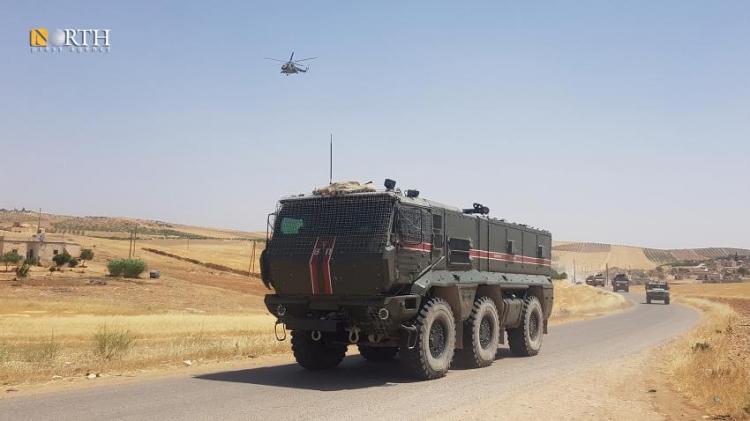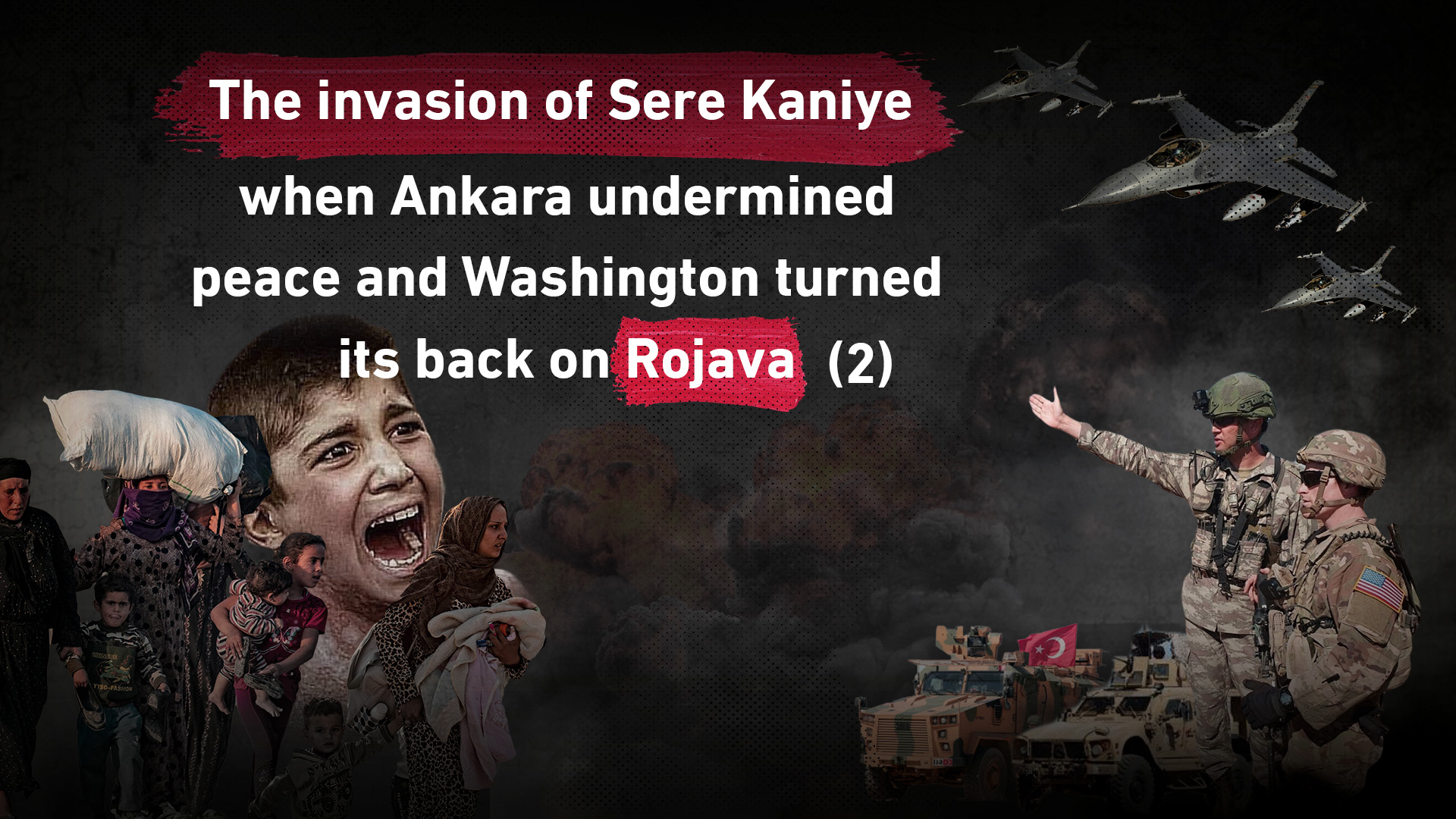It was two days before the start of the war when Washington announced that it would not stand in the way of the Turkish “Peace Spring” operation in northeastern Syria.
In a statement issued by the White House, it also said that its armed forces would not support or be involved in the operation.
With this announcement, Washington appeared to be abandoning its ally, the SDF, which it had supported within the Global Coalition against the Islamic State (ISIS) for years.
After Washington left it alone in the face of the Turkish war machine, the SDF tried to mobilize world public opinion and warned that the Turkish threat would undermine its efforts to eliminate ISIS.
Domestically, the SDF called on Arabs, Kurds, Syriacs, and Assyrians to join their ranks and stand with their legitimate forces to defend their nation from Turkish aggression.
The SDF accused the American forces of “not fulfilling their obligations.”
Ceasefire
On October 17, US Vice President Mike Pence and Turkish Foreign Minister Mevlut Cavusoglu revealed that Washington and Ankara had reached a ceasefire agreement that provided for the withdrawal of the SDF.
Pence said from Ankara that Washington had received guarantees from the SDF for an orderly withdrawal.
The agreement stipulated that the Turks cease the operation for five days in order for the SDF to withdraw from Sere Kaniye.
In his first comment on the agreement, US President Donald Trump praised Turkish President Recep Tayyip Erdogan, adding that the agreement saved millions of lives and that his country has not abandoned its allies, the Kurds.
Meanwhile, Moscow sought to open hotlines with the SDF to fill the vacuum which resulted in the withdrawal of the US forces.

By the beginning of November, Russian forces took over points and bases left by the Americans.
On November 15, the Russian Military Police took over the Sirrin base 30 km from Kobani.
Russian forces also took over two bases from which the US forces withdrew in Manbij and Tabqa.
Evoking Manbij model
In the period leading up to the Turkish Peace Spring operation, and as a result of the non-stop Turkish threats to the northeastern regions of Syria, the SDF found themselves faced with the need to start a dialogue.
Officials in the Syrian Democratic Council (SDC), the political body of the Autonomous Administration of North and East Syria, also found in the establishment of a safe zone/security mechanism “a start to create the atmosphere for dialogue with Turkey.”
Meanwhile, the SDF wanted to “reassure its friends in the Global Coalition that there is no intention to go to war with Turkey, and that they are interested in taking Turkish concerns into consideration in order to protect the region from a possible war, and accept a withdrawal from the border areas.”
The SDF’s goal in continuing with the safe zone project was to reach a scenario similar to that of Manbij, according to information sources revealed to North Press.
At the beginning of the campaign against Manbij, the agreement took place in Turkey, after which Turkey and the United States conducted their patrols on the outskirts of the city.
However, in its discussions about the safe zone with US officials, Turkey demanded the conduct of its patrols inside the city, and the matter was not accepted by the SDF.
The Turks also demanded that they be able to fly their warplanes over the region to patrol the M4 Highway, and to launch raids on sites that Turkey considers dangerous.
However, the SDF considered these demands “impossible” and could not accept them.
A senior SDF official revealed that they were aware that Russia “incited Turkey to confront the US in the region.”
But the US “did not want to be dragged into this policy, so it withdrew and handed over the region to Turkey and Russia so that they would enter into confrontation,” according to the official.
No strategic alliance
Another SDF official said that there is no “strategic alliance” between them and the US, as the alliance was born out of circumstance when the two forces worked together to fight the Islamic State.
Regarding the Turkish operation in Sere Kaniye, the SDF official said that the US does not want to confront Turkey, and at the same time, it does not wish to forfeit its alliance with the SDF in order to fight ISIS.
Ilham Ahmed, chair of the SDC Executive Board, said that they knew that the agreement would not continue.
In an exclusive interview with North Press, she said: “I do not think that the US wanted to evacuate the region from the beginning for the Turkish war machine, as some believe.”
Ahmed believes that the US “really wanted” to prepare the ground for the SDF agreement with Turkey, but the latter refused to join in the agreement.
Russia also “played an inciting role in the agreement,” as the US was unable to continue with the security mechanism agreement, according to Ahmed.
“We want dialogue with Turkey”
SDF and SDC officials say that the security mechanism agreement was tactical and oral, and that there was no document signed between the parties.
They also say that there were no guarantees that Turkey would stop its intentions in the region, even if the SDF agreed to all Turkey’s demands.
Ahmad claimed that the US Special Representative for Syria Engagement James Jeffrey wanted to implement the security mechanism agreement, but he was not able to do so at the time.
During his meetings with Kurdish leaders in Syria, Jeffrey said that he understands Turkey well and that he can make the safe zone project succeed, “but he was also shocked by Turkey,” according to Ahmed.
“In one of the meetings, Jeffrey said that Turkey is no longer the same as before; no one can understand what is going on in Erdogan’s head except his wife Amina,” she said.
“What we know is that Jeffrey wanted the safe zone to be implemented but did not want the US to lose Turkey,” she added.
Kurdish officials believe that the US does not want Turkey to strengthen its ties with Russia, and that Jeffrey is simply carrying out the desires of his administration.
When it comes to choosing between the SDF and Turkey, the US chose Turkey. “Turkey put America before this option. We did not,” according to Ahmed.
In an unprecedented statement, Ahmed said, “We are ready to sit down with Turkey for dialogue and understanding.”
“We cannot accuse the US-led Global Coalition of treason, because the US is acting according to its own interests. When it wanted to implement the safe zone, it was in accordance with its interests, and when it opened the way for the Turkish offensive, it was forced to protect its interests with Turkey,” she noted.
“We stress the need for the return of the people of Sere Kaniye and Tel Abyad to their homes, whether through war or dialogue, but we prefer dialogue to war. This is what we seek,” Ahmed concluded.

